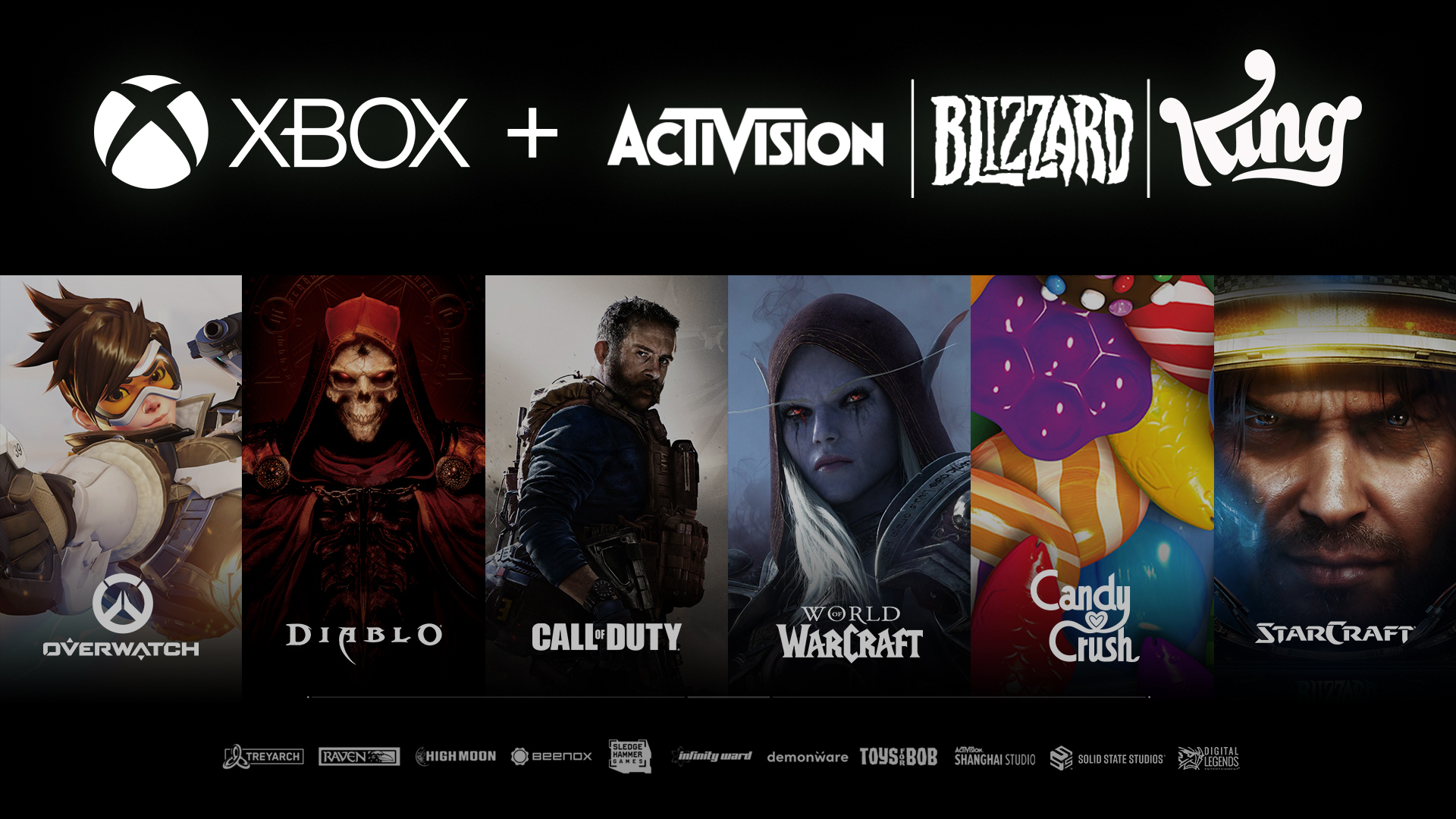M&A: A tech brand’s gate to new Arenas

M&A deals have long been a core strategy for tech brands. They have not only been fundamental for the protagonists of Web 2.0––from its founding until 2020, Apple made 123 acquisitions; Amazon, 111; Google, 268, and Facebook (now Meta), 105 [Source]–– but also explain the rise and fall of the big players of Web 1.0.
Tech giants have starred in some of the most important acquisitions so far this year: beyond the purchase of Twitter by Elon Musk, Google has acquired cybersecurity companies such as Siemplify ($500m USD) and Mandiant ($5.4b USD), Apple has acquired the British fintech Credit Kudos ($150m USD) and, while still pending, Microsoft acquired Activision Blizzard in its largest acquisition in the company’s history ($68.7b USD).
Between 70% and 90% of acquisitions fail, according to the Harvard Business Review. In this series, we’ll explore why some tech acquisitions rise above others and become a true brand win for organizations.
Web 1.0 M&A brand strategies: product-oriented acquisitions
The strongest technology brands in the 1990s and early 2000s (AOL, Yahoo!, Nokia, Ericsson, Motorola…) went, in a few years, from acquiring companies on a recurring basis to being acquired (Nokia by Microsoft, Motorola by Google, Yahoo by Verizon…). This was due, in large part, to their inability to deal with those that currently dominate the sector with agility and relevance. The agreements that were made in that period responded, as the Harvard Business Review [Source] published in 1999, to a desire to stay at the forefront of a market that was beginning to accelerate: “Most managers have a shortsighted view of strategic acquisitions […] the target rarely adds much value beyond the first product launch.” Authors Saikat Chaudhuri and Behnam Tabrizi warned: “High-tech acquisitions need a new orientation around people, not products”.
Later we will see the importance that this “new orientation around people” had for Web 2.0 when it came to strategic M&A deals, but first, it is worth noting that the acquisition strategy of the Web 1.0 players sought to:
- Gain market share in the category or sector.
- Launch new products without the need to invest in R&D, thus reducing cost and time.
This logic was behind, for example, the acquisition of Technophone in 1991 by Nokia, which pursued the development of mobile phones small enough to fit in any pocket. For its part, many historical Microsoft products, such as the MS-DOS operating system, its PowerPoint application, or its Hotmail email service (now Outlook), are the result of acquisitions.
In short, it was a dynamic very focused on the product and on market dominance. Although it is true that the rise of Web 2.0 is built on the same terms, the acceleration of innovation, the speed of adoption, the disappearance of barriers of all kinds (and with them, of industries), and the evolution of the role of the brand (from seeking differentiation to building relevance) promoted a more long-term strategic logic focused on consumer expectations.

Web 2.0 M&A brand strategies: move to people-oriented acquisitions
The big players of Web 1.0 became powerful by detecting the great opportunities that arose in the consumer technology market before anyone else: Nokia and compact mobiles, Microsoft and office automation tools… But the consumer was far from making decisions. Brands and the M&A deals that they promoted were not at the service of what the consumer wanted or expected, but of what they were inevitably going to need. In short, relevance was built around a need “imposed” by the absence of competition, not so much on Affinity or Empathy.
The distance from the consumer generated in many companies a series of “blind spots” that prevented them from considering certain Iconic Moves (such as the arrival of the iPhone or the launch of Android, for example) as a real threat. The reaction focused on neutralizing rivals rather than understanding the evolution of the consumer who was choosing Apple’s smartphone massively did not work. Nokia took full control of the Symbion operating system to accelerate its development and compete against iOS and Android but was unable to develop an integrated and user-friendly ecosystem like the new rivals. After investing money and time, the Finnish brand gave up Symbion in favor of Microsoft, which ended up acquiring its mobile division. Unable to launch a compelling enough offering in time to exceed consumer expectations in the same way Apple was, the maker of Windows ditched Nokia.
In this example, Nokia and Microsoft saw the solution to catch up with their competitors with agility and lower cost, but lacked clarity and strategic alignment (there was no ambition beyond catching up with the rival). Thus, the lack of understanding of the risks associated with the market and consumer loyalty (whose expectations had multiplied in a short time) drastically unbalanced the much-needed balance between promises and expectations generated by any process of this type. Not to mention the difficulty of quickly integrating 32,000 Nokia employees into Microsoft, asserting the maximum “culture eats strategy for breakfast.”

Brand Thinking and a new era for tech acquisitions
As we know, Nokia quickly lost relevance and brand value, eventually disappearing from Best Global Brands in 2015. Conversely, Microsoft is currently the second most valuable brand in the world with a value of $278,288 m USD.
The strength of Microsoft’s core business allowed the company to redirect its trajectory and overcome the deepest difficulties. The arrival of Satya Nadella as CEO provided the company with a clear strategic ambition (mobile first, cloud first) which, through a new acquisition policy whose value is based on obtaining resources and skills, has promoted an ecosystem with integrated products and services, and dominance in the cloud space. Bottom line: Microsoft’s return to relevance began with strong leadership.
The Microsoft case helps us understand the undeniable role that the consolidation of brand has played as a strategic business asset in the acquisitions that take place today. Establishing a clear purpose and ambition makes it easier to plan coherent long-term trajectories; trajectories that function as growth roadmaps in which each acquisition gains the title of Iconic Move by helping the business to progress towards that ambition and purpose.
When applying the lens of Brand Thinking, we see that rather than acquiring ownership of a specific product (which can provide a competitive advantage, albeit short and not very sustainable over time), the goal of most acquisitions is that of gaining competencies that are necessary to strengthen agility and the ability to respond to a turbulent market and changing consumer expectations, thereby transcending into new Arenas.
Merger & Acquisitions turn brand strength into real moves
We know that Arenas break the constraints of traditional categories, freeing companies and brands to serve core consumer needs. A brand is ready to leap into new Arenas and explore new avenues for growth when it has an integrated offering and a strong affinity with consumers. In the universe of the ‘Tech 4’ (Alphabet, Apple, Amazon and Meta), acquisitions are the springboards that allow these leaps to be made.
To gain a presence in people’s lives, Amazon entered the DWELL Arena by acquiring companies like Ring, Blink and Eeron. Apple, for its part, set foot in the THRIVE Arena by becoming a brand in the health space with acquisitions of Gliimpse, Beddit and Tueo Health. Meta has gained a relevant position in the EXPRESS Arena with Instagram. Finally, Alphabet dominates a portion of the PLAY Arena thanks to the acquisition of YouTube in 2006. We can expect this practice to continue strongly in the coming years – in fact, an executive of Facebook (now Meta) pointed out at the time that the company would spend the equivalent of 10-15% of its market value on acquisitions every two years, according to The Washington Post [Source].
This approach, so common among technological giants, is progressively extending to other brands, which can find in acquisitions the necessary tool to transcend their category and land in new competitive spaces thanks to the brand capital accumulated in the minds of consumers.
